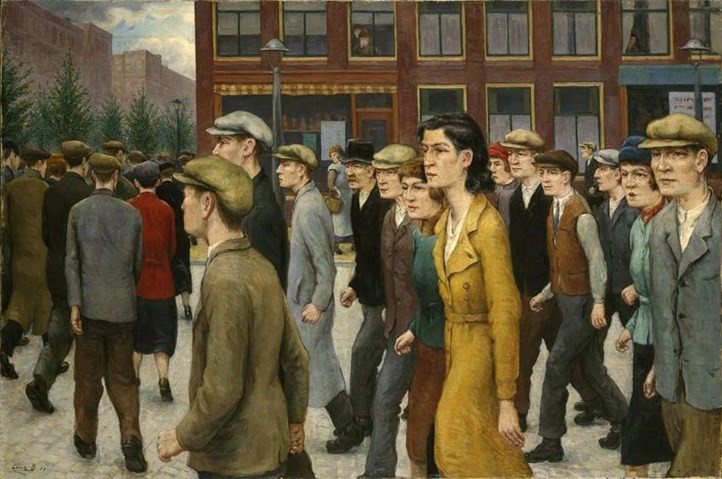Chris Beekman, De Stijl Defector
08 Apr - 17 Sep 2017
CHRIS BEEKMAN, DE STIJL DEFECTOR
8 April – 17 September 2017
Presentation of the oeuvre of De Stijl artist Chris Beekman, one of the most politically active artists affiliated with this movement. The oeuvre of this forgotten De Stijl artist is presented for the first time, featuring around 80 artworks from the holdings of the Stedelijk Museum, Museum Kröller Müller and the Amsterdam Museum.
Painter and communist Chris Beekman (1887-1964) was friends with left-wing radicals like Bart van der Leck, Peter Alma and Robert van ’t Hoff. The works he produced during the early years of De Stijl show a liberal use of geometric shape and colour. However, Beekman later rejected the group’s purely idealistic ethos and what he saw as the movement’s lack of concrete social engagement. The world was in turmoil, and needed an art that everyone could understand. In the early 1920s, he abandoned abstraction in favour of figurative work of a more political nature. The exhibition clearly traces Beekman’s break with De Stijl: as Mondrian paints his most ethereal black and white work, a disillusioned Beekman sets out to create an art for the common people. With this, he forms a trait-d'union between De Stijl and the Russian Revolution: many Russian artists, including Malevich, also returned to figuration. In addition to highlighting Beekman’s work from immediately before, during and after the De Stijl period, the presentation also explores the immediate context within which he worked. Brought into focus are links with Bart van der Leck and Piet Mondrian, with whom he became acquainted in Laren, as well as work by Jacob Bendien, Johan van Hell and Ferdinand Erfmann, and unusual early abstract work by Carel Willink.An epilogue will be added to the exhibition at the end of May 2017, revealing that Beekman sent issues of De Stijl, with photos of abstract work and De Stijl architecture, to Malevich. Research suggests that a staircase design by Van ’t Hoff is likely to have influenced the development of the last phase of Malevich’ Suprematism: the Architektons.
8 April – 17 September 2017
Presentation of the oeuvre of De Stijl artist Chris Beekman, one of the most politically active artists affiliated with this movement. The oeuvre of this forgotten De Stijl artist is presented for the first time, featuring around 80 artworks from the holdings of the Stedelijk Museum, Museum Kröller Müller and the Amsterdam Museum.
Painter and communist Chris Beekman (1887-1964) was friends with left-wing radicals like Bart van der Leck, Peter Alma and Robert van ’t Hoff. The works he produced during the early years of De Stijl show a liberal use of geometric shape and colour. However, Beekman later rejected the group’s purely idealistic ethos and what he saw as the movement’s lack of concrete social engagement. The world was in turmoil, and needed an art that everyone could understand. In the early 1920s, he abandoned abstraction in favour of figurative work of a more political nature. The exhibition clearly traces Beekman’s break with De Stijl: as Mondrian paints his most ethereal black and white work, a disillusioned Beekman sets out to create an art for the common people. With this, he forms a trait-d'union between De Stijl and the Russian Revolution: many Russian artists, including Malevich, also returned to figuration. In addition to highlighting Beekman’s work from immediately before, during and after the De Stijl period, the presentation also explores the immediate context within which he worked. Brought into focus are links with Bart van der Leck and Piet Mondrian, with whom he became acquainted in Laren, as well as work by Jacob Bendien, Johan van Hell and Ferdinand Erfmann, and unusual early abstract work by Carel Willink.An epilogue will be added to the exhibition at the end of May 2017, revealing that Beekman sent issues of De Stijl, with photos of abstract work and De Stijl architecture, to Malevich. Research suggests that a staircase design by Van ’t Hoff is likely to have influenced the development of the last phase of Malevich’ Suprematism: the Architektons.


